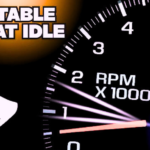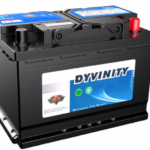A Complete Guide to Yamaha Tachometers
When it comes to maintaining optimal engine performance, having the right tools is Essential, and a tachometer is one of the most important instruments for monitoring your engine’s health. yamaha tachometer
Yamaha tachometers, specifically designed for their range of engines, are indispensable for ensuring that the engine operates within its optimal limits. Whether you’re out on the water with a Yamaha outboard or racing on a track, understanding the importance of a tachometer can help you avoid engine failure and improve your overall performance.
This guide will explain what a Yamaha tachometer is, how it works, and why it’s a crucial part of engine maintenance.
What is a Yamaha Tachometer?
A tachometer is a device that measures the rotational speed of an engine, typically displayed in revolutions per minute (RPM). For Yamaha engine users, tachometers are especially important, as they provide real-time information that helps maintain engine efficiency.
Yamaha tachometers are used in various applications, including marine vessels, personal watercraft, and motorcycles, where knowing the engine speed is vital for both performance and safety.
In many cases, these tachometers offer more than just RPM readings. For example, in marine environments, they may also offer indicators of engine temperature, oil pressure, and fuel levels. By keeping the RPM within a safe range, users can avoid potential engine damage, such as overheating or fuel inefficiency.
Why is a Tachometer Important for Your Engine?
The primary role of a tachometer is to give real-time feedback about your engine’s RPM. Knowing the RPM allows you to adjust your throttle, gears, and other controls to ensure the engine is running smoothly. Here’s why keeping an eye on this metric is so crucial:
- Preventing Engine Overstress: Engines have a specific RPM range where they perform best. If you push an engine too far past its safe operating range, it can lead to overheating or premature wear. A tachometer prevents this by alerting you if you’re revving too high.
- Improving Fuel Efficiency: Operating an engine at an optimal RPM reduces fuel consumption. Tachometers help users keep track of engine speed, allowing them to drive more efficiently and save fuel. This is particularly important for long-distance boating or when using engines for work-related tasks.
- Maintaining Peak Performance: For performance-oriented users—whether for boating or motorsports—maintaining a proper RPM is key to getting the most out of your engine. Tachometers allow racers to time their gear shifts perfectly and ensure maximum speed without overstraining the engine.
- Monitoring Engine Health: A tachometer is more than just an RPM gauge; it’s a tool for preventative maintenance. If an engine is revving inconsistently or beyond the expected limits, this can signal a problem. Early detection helps address issues before they cause significant damage.
Different Types of Yamaha Tachometers
Yamaha produces various types of tachometers to suit different needs. Here’s a look at the different types available:
- Analog Tachometers: These are the traditional type, featuring a needle that moves across a scale to indicate the RPM. Many Yamaha enthusiasts still prefer these simple and reliable devices because they are easy to read at a glance.
- Digital Tachometers: Digital tachometers offer a more modern, precise display of RPM, typically in numeric form. These devices often come with additional features, such as warning lights that alert you to engine problems like overheating or low oil pressure.
- Multifunction Tachometers: Some Yamaha tachometers are multifunctional, meaning they combine RPM data with other engine parameters. These models may also display things like fuel levels, temperature, and battery voltage, giving you a comprehensive view of your engine’s condition without the need for multiple gauges.
- Wireless Tachometers: Wireless tachometers are a newer option that connects to your device via Bluetooth or Wi-Fi, allowing you to monitor your engine’s RPM remotely. This can be particularly useful for data logging or for those who want to keep track of performance metrics over time.
How Does a Yamaha Tachometer Work?
The tachometer works by detecting the rotational speed of the engine’s crankshaft, converting that rotational speed into a readable RPM value. This data is transmitted from the engine’s control system to the tachometer, which then displays the RPM either through a needle on an analog display or a digital readout.
For more advanced Yamaha digital tachometers, additional sensors may be used to collect data on oil pressure, fuel consumption, and other vital engine statistics. The tachometer then processes and displays this information, offering the user a clear view of their engine’s status.
Why Choose a Yamaha Tachometer?
Yamaha tachometers offer several advantages that make them the go-to choice for many engine owners:
- Engine Protection: Keeping an engine within its designated RPM range is vital for preventing long-term damage. Yamaha tachometers provide real-time feedback, helping users avoid revving too high and risking engine overheating or other forms of damage.
- Better Fuel Economy: With a tachometer in place, you can adjust the engine’s performance for better fuel economy. Maintaining an optimal RPM range helps ensure that you’re using the right amount of fuel for the task at hand.
- Maximized Performance: In applications like racing or competitive boating, a tachometer ensures that the engine operates at peak performance. It helps drivers know when to shift gears, push harder, or ease up on the throttle, optimizing power output.
- Preemptive Troubleshooting: With a tachometer, unusual engine behavior such as fluctuating RPMs or irregular revving can be identified early, which may indicate mechanical issues. This allows for quick repairs and preventive maintenance.
Choosing the Right Yamaha Tachometer
When selecting a Yamaha tachometer, there are several factors to consider to ensure you get the right model for your engine and your needs:
- Compatibility: First and foremost, ensure that the tachometer is compatible with your Yamaha engine. Different models may have varying requirements, so double-check the specifications before purchasing.
- Display Type: Consider whether you prefer an analog or digital display. Analog displays offer simplicity and ease of use, while digital versions may provide additional features and more accurate readings.
- Added Features: Some Yamaha tachometers come with added features, such as fuel gauges, oil pressure indicators, or temperature readouts. If you want a comprehensive view of your engine’s health, a multifunctional tachometer might be the best option.
- Wireless Functionality: If you’re looking for more convenience and data-tracking capabilities, a wireless tachometer that syncs with mobile apps or other onboard systems might be ideal.
- Durability: Especially for marine applications, the environment can be harsh. Be sure to choose a tachometer that is water-resistant and built to handle exposure to saltwater and other challenging conditions.
Maintaining Your Yamaha Tachometer
To ensure accurate readings and a long lifespan for your Yamaha tachometer, follow these simple maintenance tips:
- Regular Cleaning: Dust and debris can accumulate on the tachometer’s face and sensor connections, affecting its accuracy. Clean the unit regularly to maintain its performance.
- Inspect Wiring: Periodically check the wiring to ensure that the connections are secure and free from corrosion, especially in salty environments like the ocean.
- Test for Accuracy: If you notice unusual readings, test the tachometer by revving the engine and observing the response. If it seems inaccurate, there may be a wiring or sensor issue that needs addressing.
- Calibrate the Device: Some Yamaha tachometers require periodic calibration. Refer to the manual for specific instructions on how to calibrate your device, or have it serviced by an expert.
Conclusion
A Yamaha tachometer is more than just an accessory; it’s a vital tool for anyone using a Yamaha engine. Whether you’re navigating the waters with a Yamaha outboard, cruising on a personal watercraft, or pushing the limits of performance in motorsports, a tachometer ensures you stay within the optimal.
RPM range, safeguarding the engine and improving efficiency. By choosing the right model, maintaining it properly, and understanding its significance, you’ll ensure that your engine continues to perform at its best for years to come.








